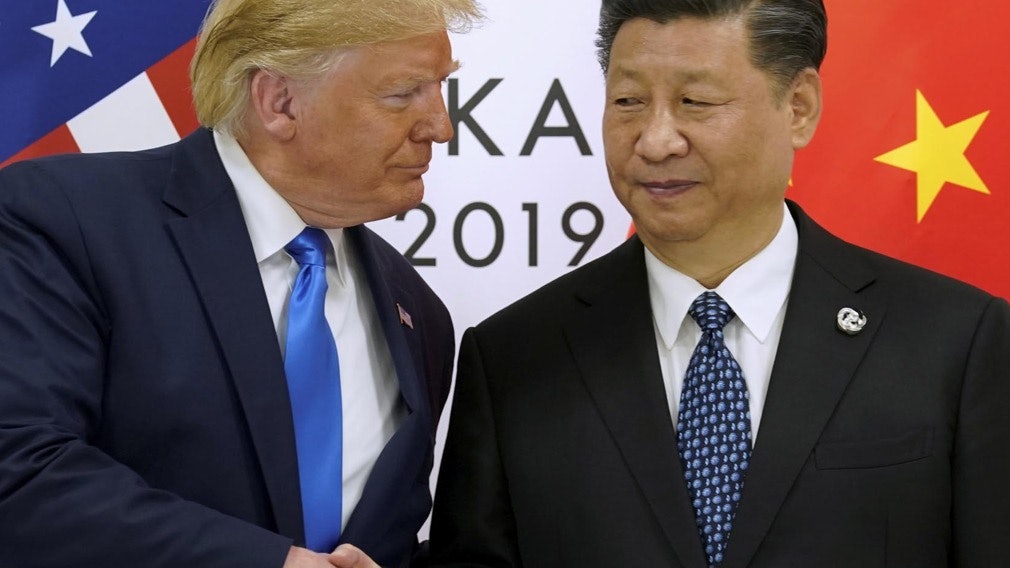On November 16, the Chinese Vice Premier and the Chinese leader of the China-US Comprehensive Economic Dialogue, Liu He, talked with US Trade Representative Robert Lighthizer and Treasury Secretary Steven Mnuchin about the first phase. The core concern of the agreement. The Chinese side said that the call was “constructive” and the two sides will continue to maintain close communication. Just one day before the call between China and the United States, that is, on November 15, the Trump administration came out that the US and China may first sign the first phase agreement and then hold the heads of state meeting and signing ceremony.
At the deputy ministerial or ministerial level, China and the United States reached a textual agreement, and the meeting was held after the meeting. This is an option that has existed since the two sides started the first phase of the agreement. The main purpose of such an option is to alleviate the economic and trade tensions and avoid the escalation of trade wars.
After the two ministers signed the agreement, they would be able to honor each other’s commitments to cancel some of the tariffs, and also allow the United States to cancel the plan to impose new tariffs in mid-December. In December 2018, at the request of a US domestic importer, the Office of the US Trade Representative announced that it would exempt the $34 billion worth of Chinese goods from the 25% tariff set for the first time in July 2018. The tariff exemption for these goods will expire on December 28 this year. Whether this exemption period is extended depends on whether the agreement text can be reached.
In other words, the progress of the preparations for the work of the two sides is not very smooth, and it is difficult to reach a consensus in the short term. For China, the difficulty of coordinating the time and place of the Chamber with the United States is no less than the trade negotiations between the two. It should be said that the choice of location and time of the Chamber is also part of the trade negotiations, as it involves whether or how the parties have cancelled the tariffs already imposed. In particular, the United States has always had doubts about China’s ability to deliver on its promises.
For the United States, the Trump administration attaches great importance to the “signing ceremony” because it is a “political show” for Trump, who faces election pressure. But China does not need such a political show, but instead asks the United States to cancel the tariffs already imposed. In this regard, Kudlow confirmed on November 7 that the Chinese side reached a consensus on such concessions. But then it was denied by the hawks. On November 15, Kudlow changed his mouth and said that President Trump is not ready to sign the agreement and has not agreed to what kind of commitment to the first phase agreement.
At the same time, according to US media reports, the United States has temporarily overweighted and asked China to make more concessions, even at the expense of some of the issues that should have been discussed after the signing of the first phase of the agreement.
However, the United States turned to first signing the agreement and then holding the heads of state meeting, which is also a concession. China promised to sign the agreement, which must include the United States to synchronize the requirements of the tariff cancellation. If the tariff consensus cannot be reached, the agreement cannot be signed, let alone the signing ceremony of the heads of state. Only when the two parties first sign the agreement at the ministerial level and reach a consensus on reducing tariffs will it be easier to promote the summit.
In addition, the downward pressure on the economy facing the United States is also prompting the Trump administration to sign a phased trade agreement with China as soon as possible.
China currently imposes tariffs on US$135 billion in goods, including US soybeans, pork, cosmetics and motorcycles. According to the latest agricultural data released by the US Department of Commerce, as of September 2019, the annual export volume of the state’s exports to China from more than 30 agricultural and industrial zones, from Florida to Alaska, was double-digit. For example, in Texas, exports to China fell 39%; Alabama, a car-exporting state, fell 49% from January to September; Florida’s exports to China fell 40%; West Virginia and Wisconsin The state’s decline also reached about 25%. US national exports to China fell by 15% over the same period.
On the other hand, the impeachment investigation of the House Democrats temporarily made it difficult for Trump to make concessions to China and promote the Xi’an. Beginning on November 18th, the House of Representatives will hold five public impeachment hearings this week, with a total of eight witnesses. However, this impeachment investigation will also prompt Trump to achieve results in diplomacy, such as reaching a first-phase trade agreement to ease or transfer the public opinion of the Democratic impeachment investigation. Perhaps because of the inability of the Society to be realized in the short term, Trump has turned to North Korea. On November 17, Trump sent a Twitter call for North Korean leader Kim Jong-un to act as soon as possible, reach an agreement, and meet him as soon as possible.












